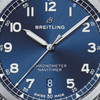

4 things you should know about watches with a chronometer
In our last article, we tried to explain how a mechanical movement works. Today, we have another interesting topic for you. Customers often confuse two basic terms: chronograph and chronometer, even though they are two completely different concepts. To help you understand the difference, I have prepared this article. So what is the difference between a chronometer and a chronograph? Simply put, a chronograph is a stopwatch and a chronometer is a certified timekeeping device, abbreviated as COSC. You will learn what COSC is and what it entails in the following lines.
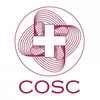
The Swiss Controlíre Official Suisse des Chronometres (COSC) has a relatively strong influence on Swiss watchmaking. Its official birth dates back to 1973, but it was not the very first institute focused on measuring time. Watches were already being tested in Neuchâtel in 1800. Today, the COSC has developed a set of tests that a watch movement must undergo in order to be designated a chronometer. As I mentioned above, people often confuse chronometer with chronograph. So, once again and more clearly: a chronometer is a certified time-measuring device, which can be used to describe watches with a chronograph, three-hand watches, but also quartz watches, while a chronograph is simply a stopwatch. Period.
At the time this institute was founded, it was a really big deal, but nowadays, this wow effect may be lagging a bit, which is a shame. It is still a very valuable aspect that says a lot about a given watch and its accuracy and reliability. To give you a better idea of what makes COSC so special, here are a few interesting facts. More than 15% of the watches we offer in our brick-and-mortar stores and e-shop are certified by COSC, and watches with this certification are significantly more expensive. Let's find out why.
1. Only watches with SWISS MADE can be admitted to testing (COSC). What does this mean? The movement must be Swiss, i.e., it must be assembled in Switzerland, the final tests must have been carried out in that country, at least 60% of the financial costs must be of Swiss origin, and at least 50% of the value of the components must be SWISS MADE. However, the topic of SWISS MADE is much more complex, and I will address it in another article. The reason why watches from other brands, such as German or Japanese, are not admitted to the tests – even though there is no doubt about their quality and accuracy – is that this institute is a non-profit organization and serves mainly to support the Swiss watchmaking industry.

2. In order for the watch to pass the test, it must be sent by the manufacturer to one of the laboratories, where it is subjected to a series of measurements and steps (only the movement without the case is sent for testing). Each movement is registered by the serial number stamped on the rotor and equipped with a white dial and black hands for better readability. You should always receive a certificate with COSC watches, so be careful. The movement is then anchored in a special holder on a rotating arm that can simulate the movement of a human hand. There are exactly five positions. The movement is then wound according to the specifications provided by the manufacturer. After this preparation, the movement is placed in a special cover, where it is exposed to a temperature of 23 degrees for 12 hours. For the next 15 days, the watch is tested on a daily basis in 5 different positions and 3 temperatures (23°, 8° and 38°), and the verdict is issued based on seven parameters: average daily deviation, average change in deviation, largest difference in deviations, difference between deviations in horizontal and vertical positions, largest difference in deviations, temperature difference, speed recovery. The worst result that a certified watch can show is a deviation of - 4 + 6 seconds per day, but this is the worst-case scenario - they are usually much more accurate. For comparison: for non-certified watches, the deviation is + - 15 seconds per day! This testing is in accordance with ISO 3149 from 1976. Specific and more accurate information can be found in the table below.
| Symbol | Criterion | Limit (s/d) | |
| Category 1 | Category 2 | ||
| Avg R | Average daily deviation | -4 +6 | -5 +8 |
| Avg V | Average change in deviation | 2 | 3.4 |
| Max V | Highest difference in deviations | 5 | 7 |
| D | Difference between deviations in horizontal and vertical position | -6 +8 | -8 +10 |
| P | Largest difference in deviations | 10 | 15 |
| C | Temperature difference | +/- 0.6 | +/- 0.7 |
| R | Speed recovery | +/- 5 | +/- 6 |
| The minimum requirements are considered absolute limits, and no calculation result is rounded down. | |||
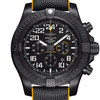
3. The office is divided into three separate testing laboratories, which employ 60 full-time staff and 70 support staff. The laboratories are located in the towns of Biel, Saint-Imier, and Le-Locle. Due to testing requirements, the company operates continuously for 350 days a year. Since the company was founded, the number of certified calibers has been increasing year on year. In the beginning, in 1973, only 200,000 watches were tested, but today the number is around 1.6 million certified movements per year. However, if we take into account the entire Swiss watch production, only 6% of all watches produced in this territory are entitled to be labeled as chronometers. That says a lot.
4. 2015 was the last year in which the institute published sensitive data on testing and certificates awarded to individual brands. Among the regular and successful submitters of their calibers is the ROLEX brand with a final count of 795,716 watches. It is followed by Omega with 511,861 watches and Breitling with 147,917 watches, of which 28,499 are battery-powered. However, it should not be forgotten that this data is from 2015, and it is therefore highly likely that these figures are different today. Of course, the privilege of having watches undergo this test does not belong only to the above-mentioned brands, even though they account for more or less the majority. The brands Tissot, Certina, and, last but not least, Longines also include watches with COSC certification in their portfolios.
If you've made it this far, I'm glad. Certified watches are definitely a good choice. For me personally, it gives me a guarantee that the manufacturer simply had to pay more attention to the production of the movement in order to pass the test. However, there is one thing worth remembering, and that is the fact that watches are not certified as such, but only the movement is sent for testing. This raises a number of issues and questions, which we will address another time.
Below the article, I have selected a few really great chronometers for you that are worth checking out :-)
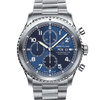
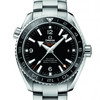
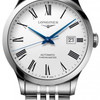
Introduction
My name is Martin Demko and I have been working with watches since 2011. During that time, I have handled many models, both cheap and expensive, from renowned brands and lesser-known ones. My work is both a pleasure and a hobby for me. What I have always strived for and continue to strive for is maximum honesty towards customers, even at the expense of business. I have completed numerous courses and a considerable amount of training in Switzerland. If you like my articles and my subjective view on various issues, or if you disagree, feel free to write to me at m.demko@racio.com. I would really appreciate any feedback.



